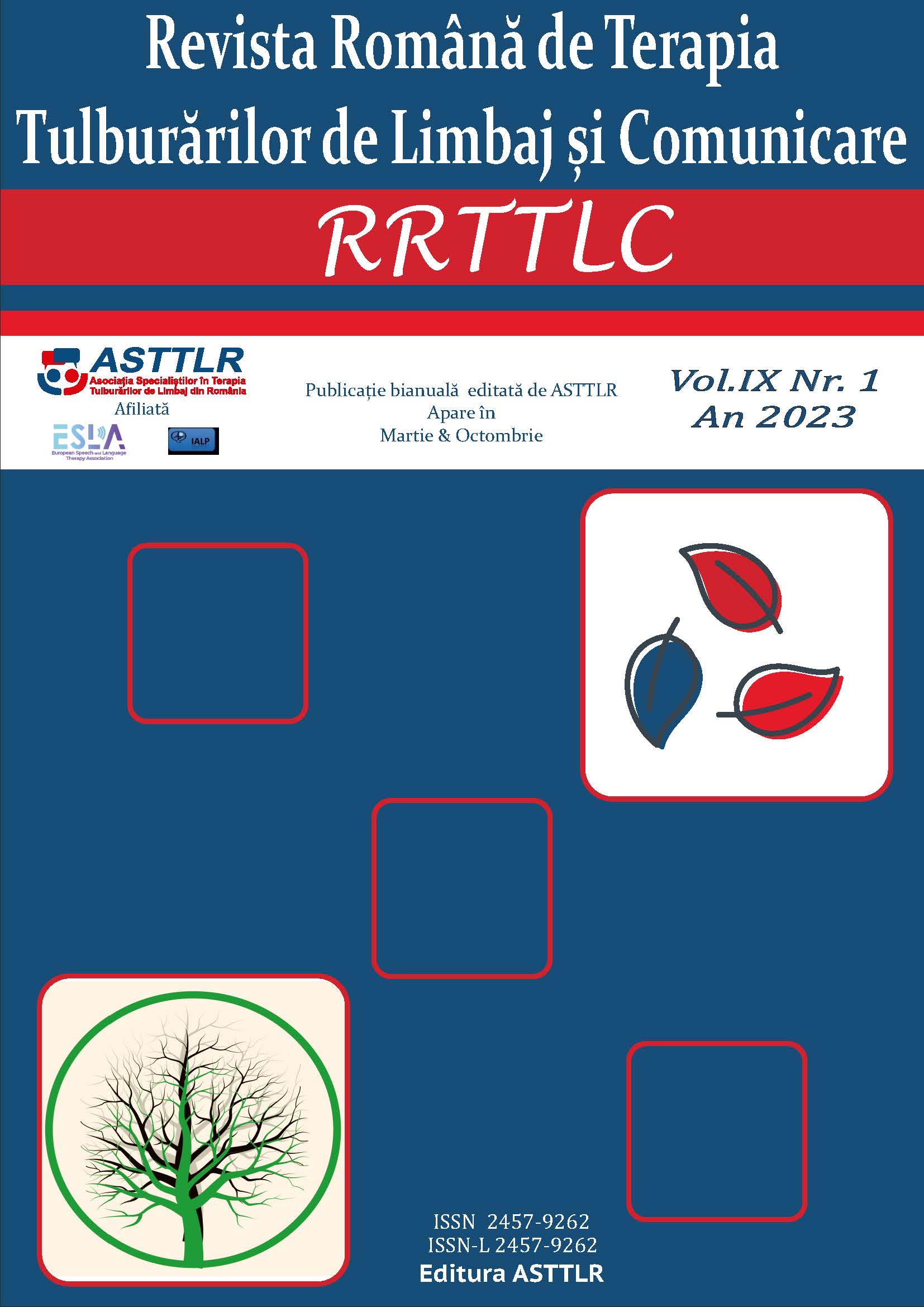O perspectivă logopedică asupra tranziției către școlaritate a copilului cu implant cohlear
Phonological and morphological features of sign language – hearing participants’ perceptions on the learning process
Author(s): Ovidiu Tudorean, Alois GherguțSubject(s): Social Sciences, Language acquisition, School education, Inclusive Education / Inclusion, Pedagogy
Published by: Asociația Specialiștilor în Terapia Tulburărilor de Limbaj din România
Keywords: cochlear implant; family-centred practice; transition from preschool to school;
Summary/Abstract: Cochlear implant (CI) is a medical procedure originally developed in the United States. In Romania, it is part of the national programme for the treatment of deafness with implantable hearing aids managed by the National Health Insurance House. Successful implantation transforms the child with hearing loss into a hearing but not a speaking child. Only with systematic support and guidance will the child become a speaker. It is risky to assume that the development of the child with CI follows the same milestones and has to overcome the same challenges as the typical child. In fact, successful integration into mainstream school must be considered a separate objective, which will be prepared and actively pursued during the child’s pre-school years by the child’s educational partners (family – teachers – speech therapist). Spontaneous development is not guaranteed; moreover, there is a risk of losing the child’s development potential. This is why the preparation of the family, the child with CI, the teachers and even the school as a physical environment is essential for a successful start at school. This paper aims to provide a brief contextualisation of cochlear implantation and also answers some pressing questions for an optimal transition to schooling. It considers building and strengthening the self-image of the child with CI, developing personal autonomy, training and developing conversational skills, investigating options related to school choice, getting to know the school and future teachers, forming and developing the prerequisites for schooling, pragmatic suggestions for involving the family in school activities, but also for involving teachers in the school integration of the child with CI.
Journal: Revista Română de Terapia Tulburărilor de Limbaj şi Comunicare
- Issue Year: IX/2023
- Issue No: 1
- Page Range: 36-51
- Page Count: 16
- Language: Romanian

